Richa Bhavanam /India
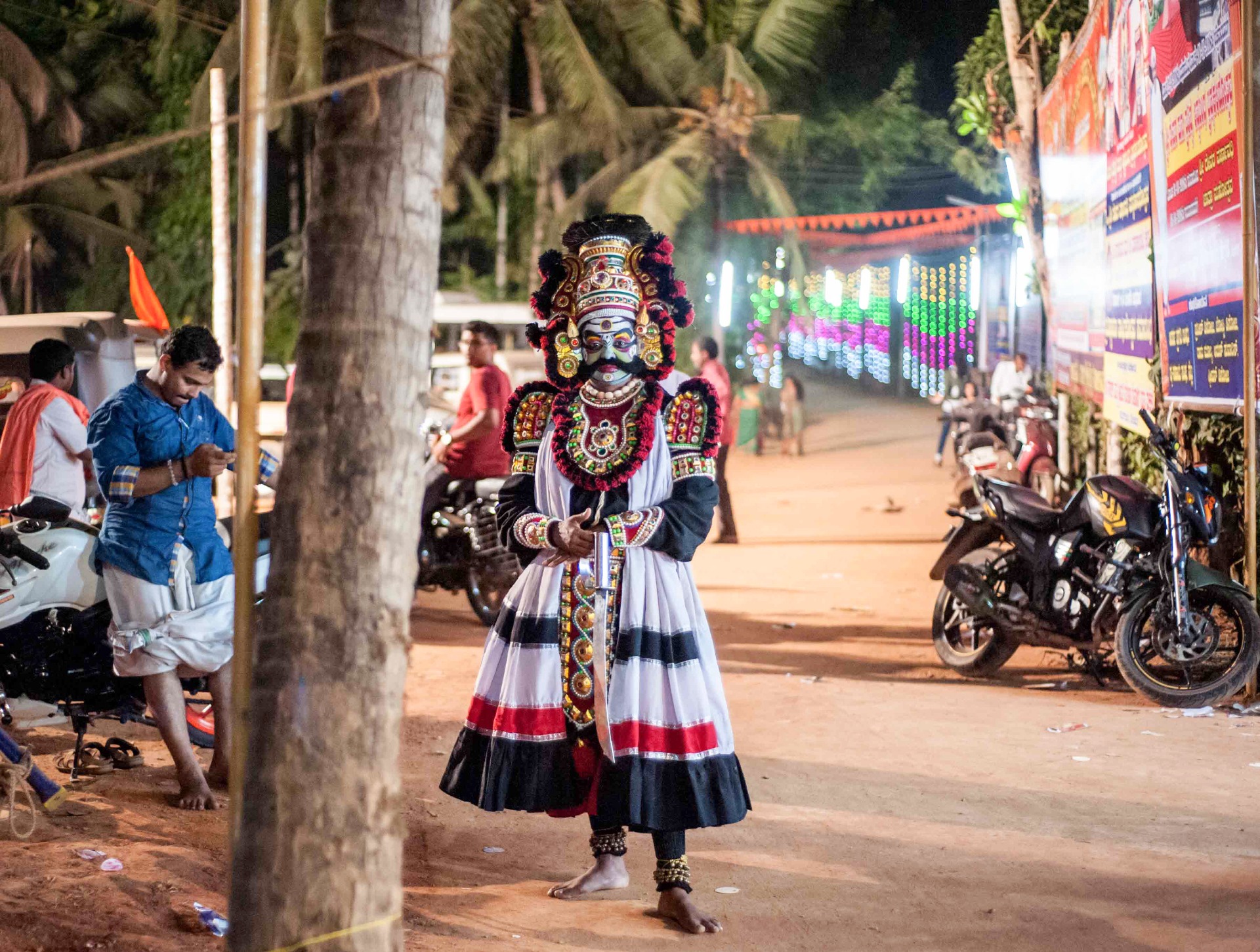








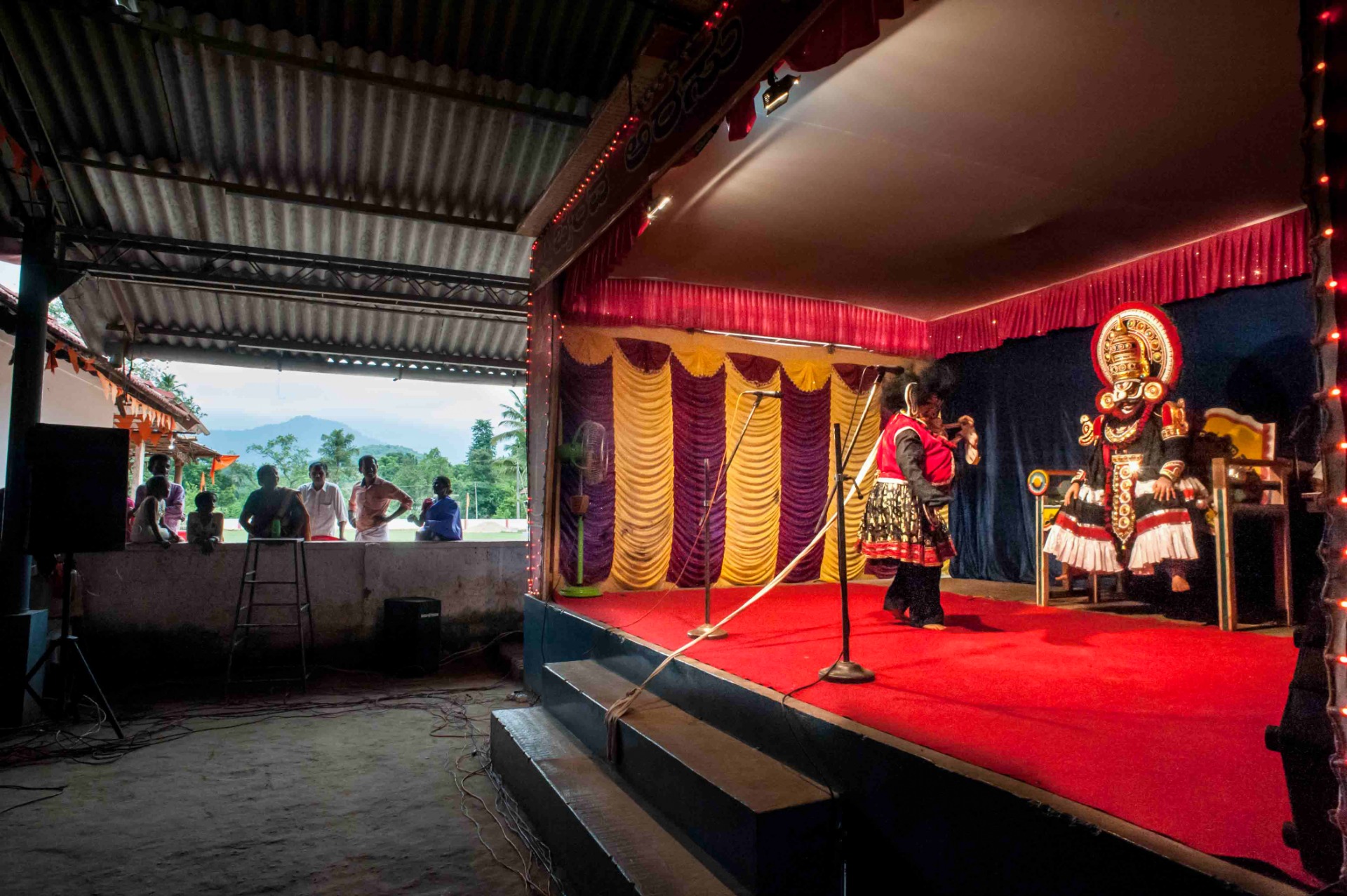


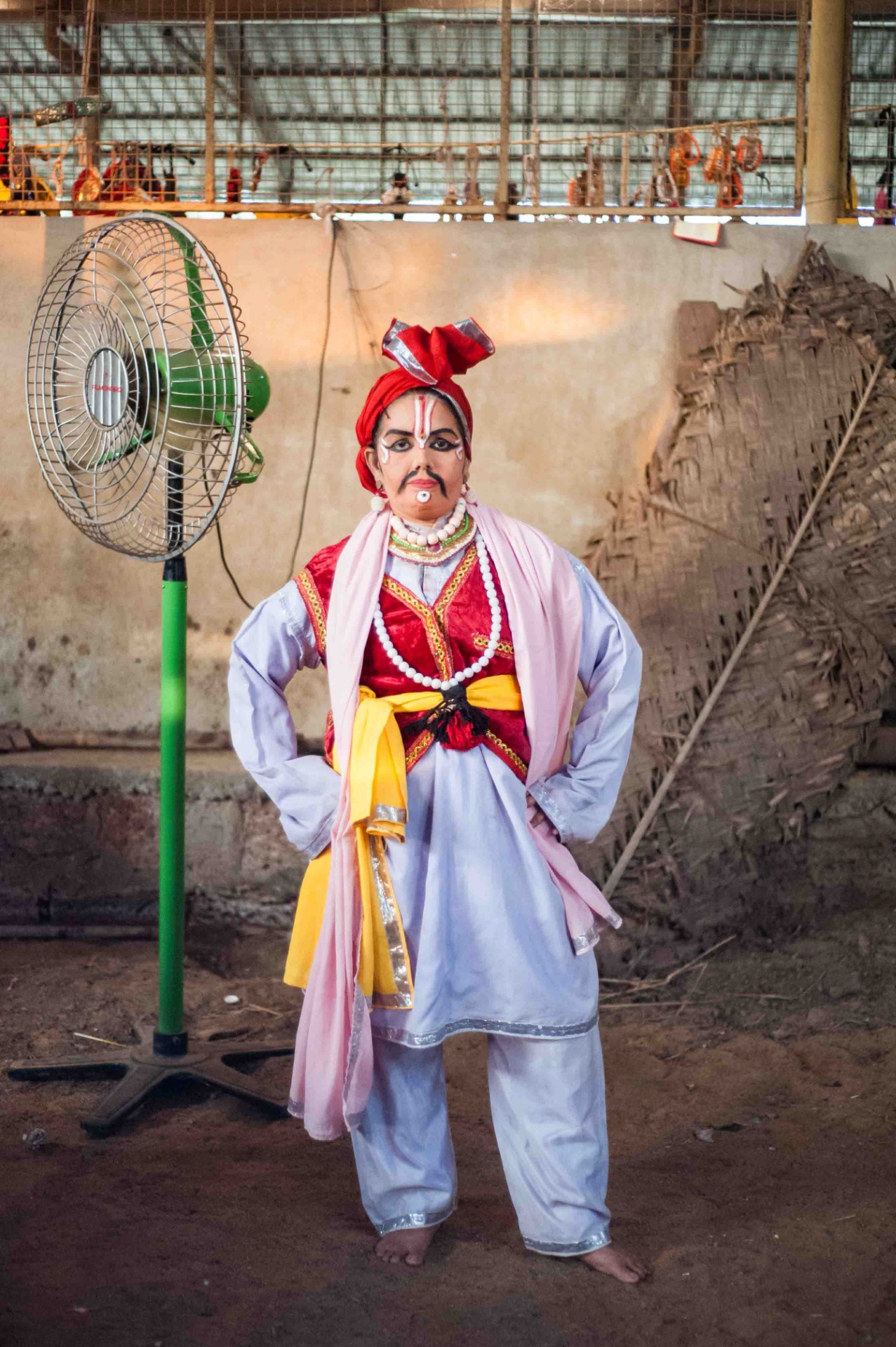

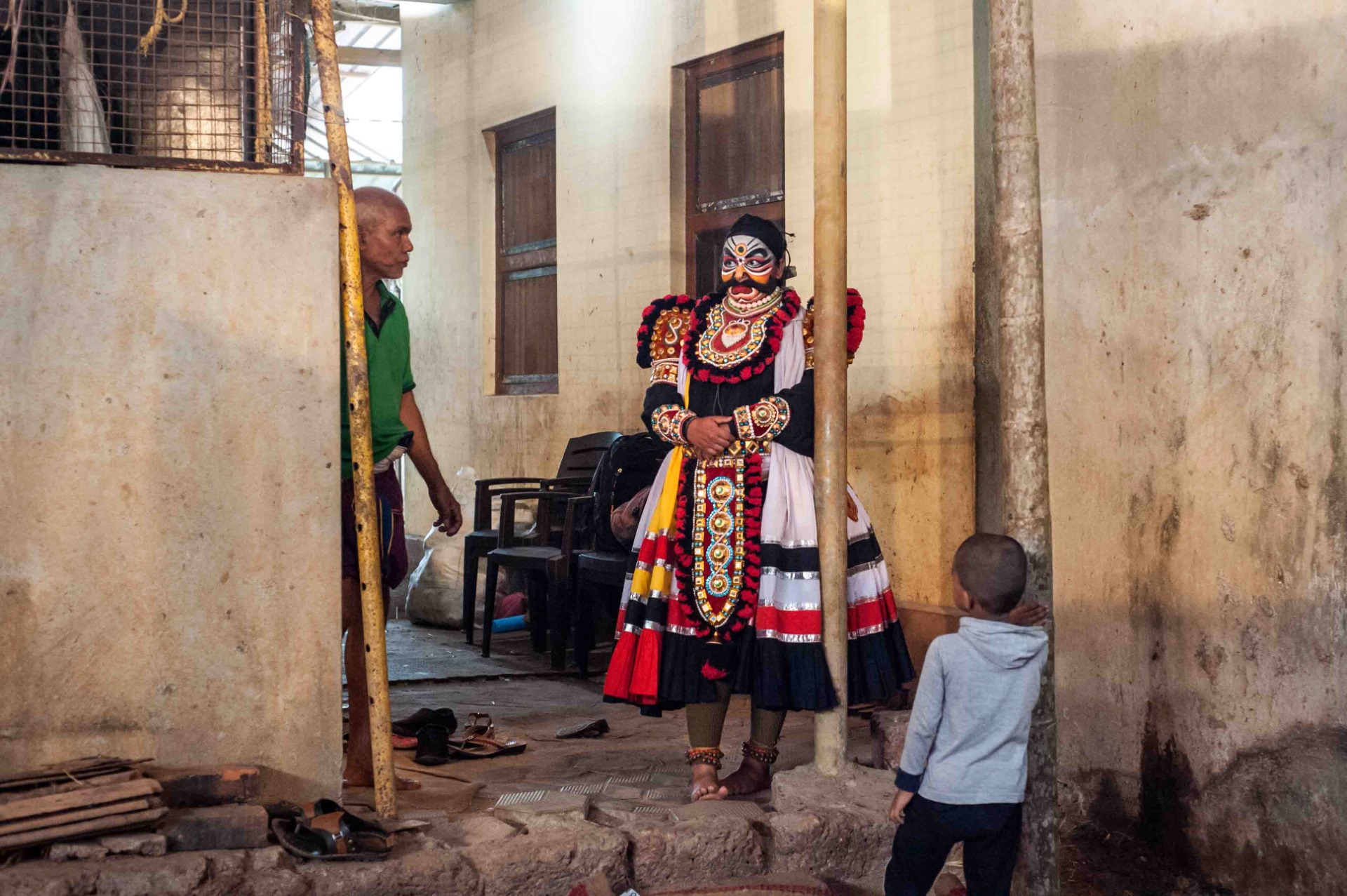



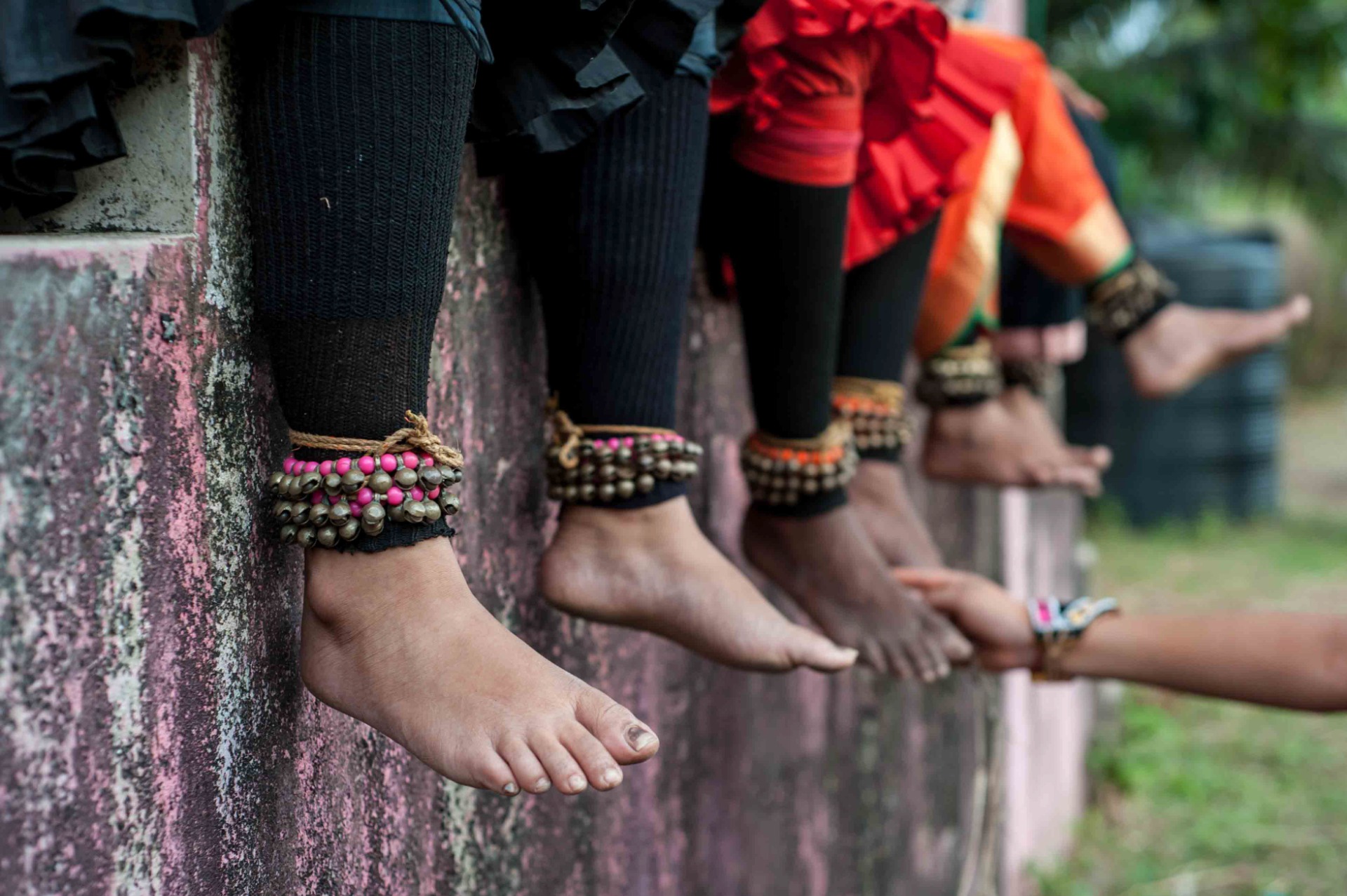
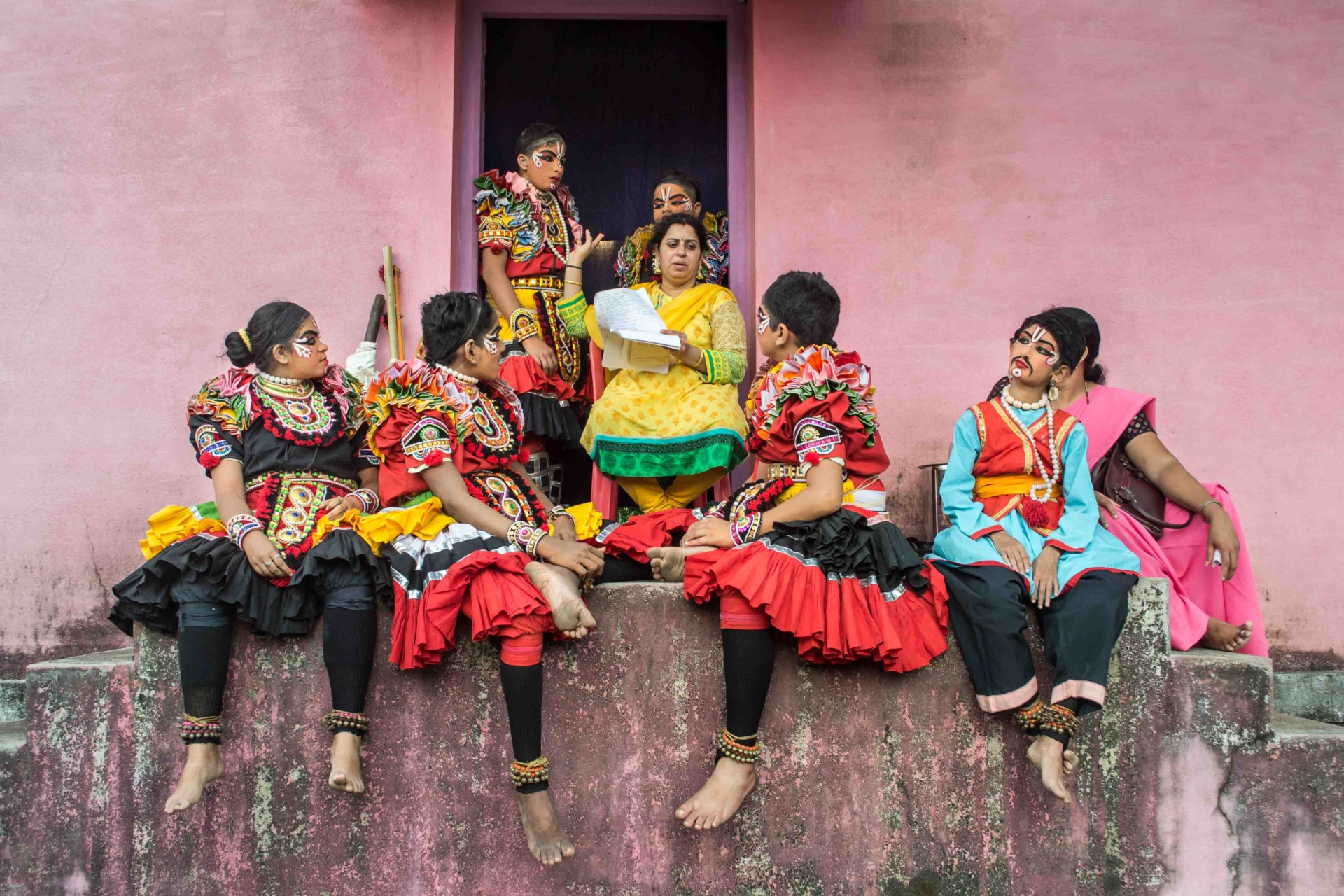
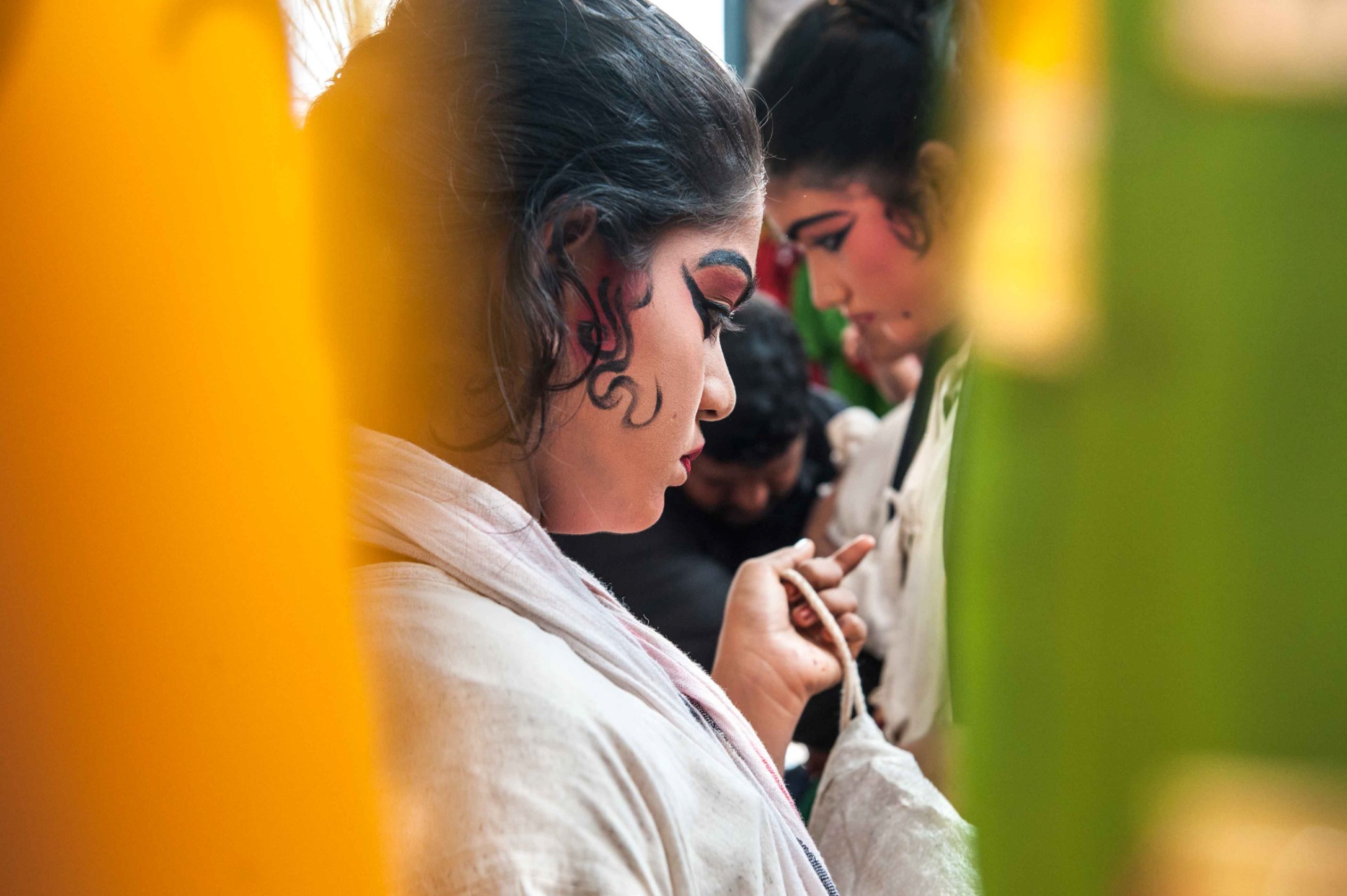

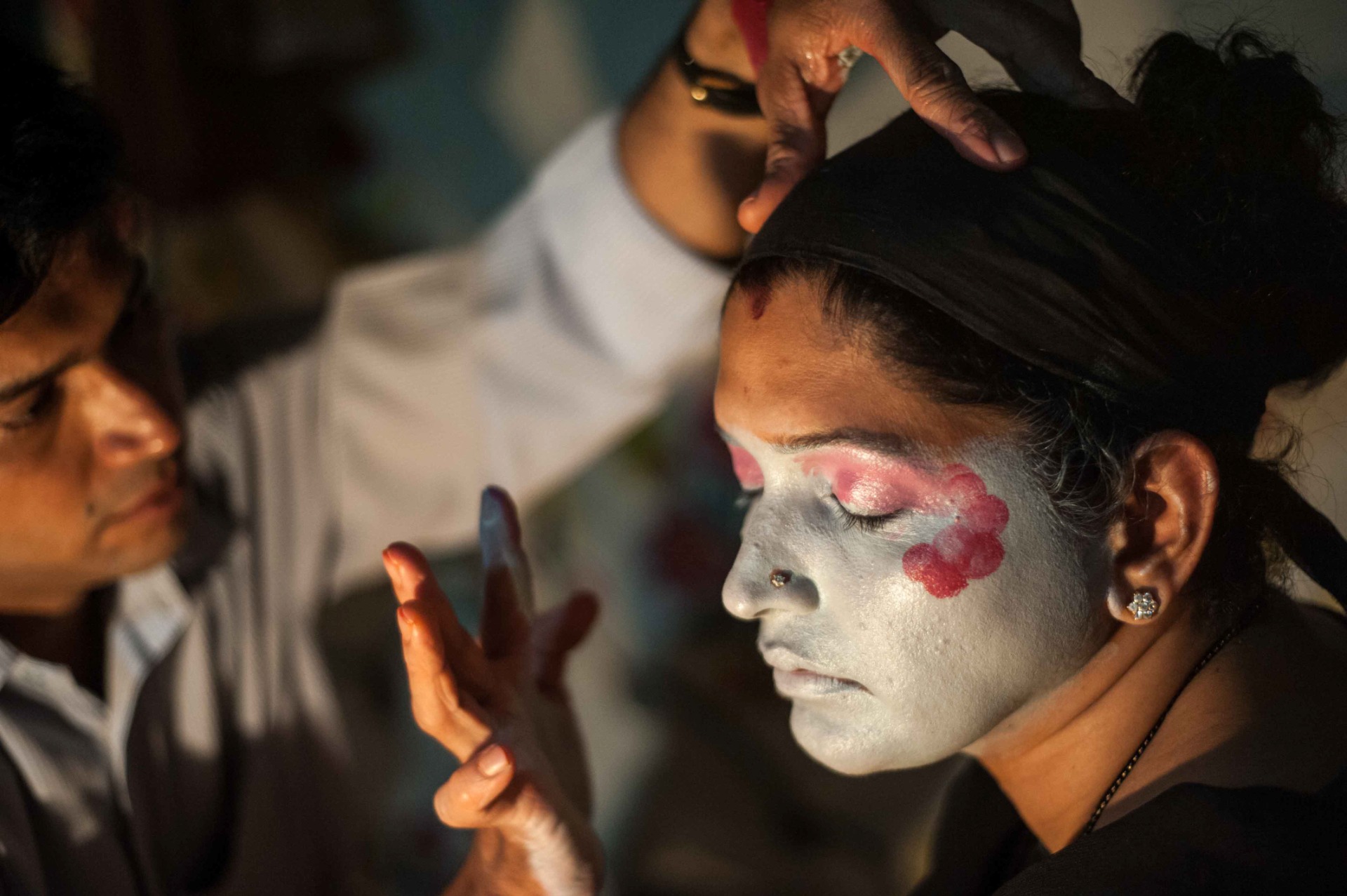


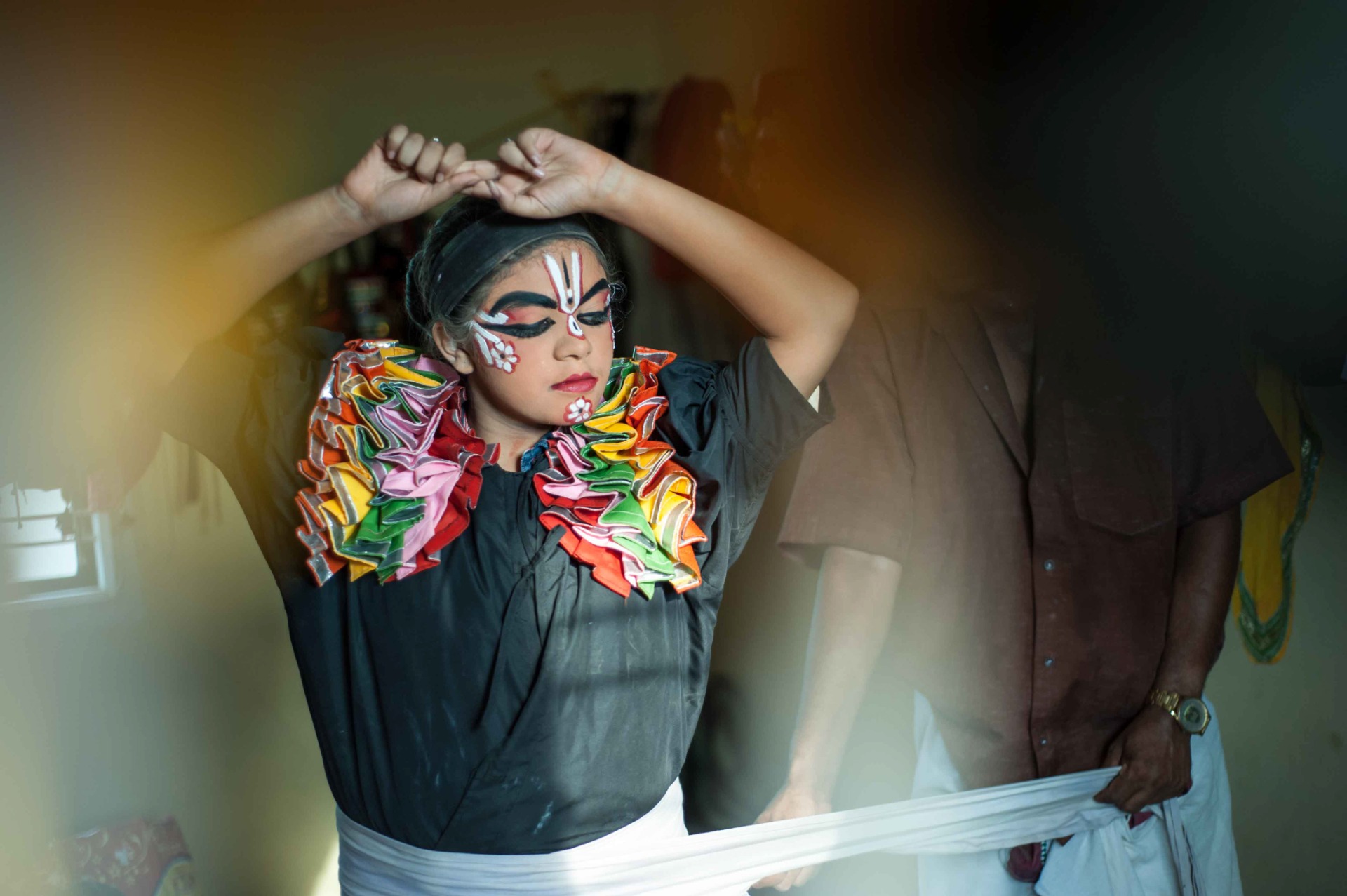




Mahila Yakshagana : Where Women Become Heroes
I travelled to Coastal Karnataka, the home of Yakshagana, to photograph and learn about changing gender representation in Yakshagana. I was curious to see the form that this young practice is taking, as women are participating as equals in this performing art space that solely belonged to men for hundreds of years.
The first all-women's troupe was put together in 1989 by Poornima Rai, one of the pioneers of Mahila (women's) Yakshagana. who currently teaches 200 students at her home in Surathkal.
By the early 2000s, more women, some of whom were dancers from other traditions like Bharatanatyam, were involving themselves with Yakshagana.
Bringing together costume design, make-up, theatre, dance and music, Yakshagana is one of the richest art forms in India.
As it stands today, Yakshagana is progressively becoming more inclusive-not merely with regard to its content, form or audience but also in terms of who the performers are.
Vasundhara explains, 'The inclusion of women and children has led to renewed interest in Yakshagana. They say that Yakshagana is seeing a growth curve now because of the number of women and young children who practice and learn the art with heartening enthusiasm. If we continue to develop the form while keeping in mind its roots, we can say that the future holds promise.'
As I learnt about Yakshagana, I was of course struck by the drama of the painted faces, the frills and colours on their costumes and the towering headgear. But beyond the performances onstage, I was particularly fascinated by the world of the Yakshagana backstage. Unlike most other green rooms that are inaccessible to non-performers, the Yakshagana green room is a space that welcomes friends and family, children and curious onlookers.
Owing to the improvisational nature of Yakshagana, there is much conversation and camaraderie between artists in the green room. There is a sense of comfort and ease that nestles the atmosphere, as if it is simply an extension of their homes.
I was most mesmerised by the transformation of the women I met into mythical, larger-than-life characters. Many women have embraced Yakshagana for the sense of physical freedom that it has allowed them to experience: the exaggerated, big, broad and open movements, which are otherwise atypical attributes of a 'feminine' body, are found to be liberating. The women and young girls I met in the green rooms shared their stories with me with bare honesty and allowed me a peek into their world of Yakshagana like I was never an outsider. The following series of photographs hopes to show this world of Mahila Yakshagana-the performances, the festivity in the green room, and the quieter, more personal, magical narrative of the artist transforming from the person they are into the heroic characters they perform.
Curator's statement:
Yakshagana which also literrally means " The Song of the Demi Gods " is an age old traditional theatre art which emerged in the southern Indian states of Karnataka and Kerala in, around the 16th century.
Primarity a male dominated performing art form for centuries, it found itself in a new avatar in 1989 when the first all women troupe was introduced to the world stage.
Richa, who finds herself highly intrigued by the changing gender representation in Yakshagana, feels highly welcomed and at home with the performers off and on stage. Her highly spirited and vibrant documentation brings us into a radiant world of performers impersonating gods and demons, through a series of elegant portraits and highly engrossing moments.
Sandeep Biswas
Curator /India
Mahila Yakshagana: Donde las mujeres se convierten en héroes
Viajé a la costa de Karnataka, cuna del Yakshagana, para fotografiar y aprender sobre el cambio de la representación de género en el Yakshagana. Tenía curiosidad por ver la forma que está tomando esta joven práctica, ya que las mujeres están participando como iguales en este espacio de arte escénico que durante cientos de años perteneció únicamente a los hombres.
"No somos nosotras mismas, sino que nos sumergimos completamente en el personaje que interpretamos", me dice Sai Suma, una artista de Yakshagana que a menudo interpreta papeles masculinos. Y continúa: "Cuanto más actuamos, más cambia el Yakshagana nuestra personalidad: nuestra voz se vuelve más fuerte, nuestra forma de caminar más masculina; la gente dice que por qué caminas así".
La primera compañía de mujeres fue creada en 1989 por Poornima Rai, una de las pioneras del yakshagana mahila (femenino), que actualmente enseña a 200 estudiantes en su casa de Surathkal.
A principios de la década de 2000, más mujeres, algunas de las cuales eran bailarinas de otras tradiciones como el Bharatanatyam, se involucraron en el Yakshagana.
El Yakshagana, que reúne diseño de vestuario, maquillaje, teatro, danza y música, es una de las formas artísticas más ricas de la India.
Hoy en día, el Yakshagana es cada vez más inclusivo, no sólo en cuanto a su contenido, forma o público, sino también en cuanto a quiénes son los intérpretes.
Vasundhara explica: "La inclusión de las mujeres y los niños ha provocado un renovado interés por la Yakshagana. Dicen que el Yakshagana está experimentando una curva de crecimiento debido al número de mujeres y niños pequeños que practican y aprenden el arte con un entusiasmo alentador. Si seguimos desarrollando la forma teniendo en cuenta sus raíces, podemos decir que el futuro es prometedor".
Mientras aprendía sobre el Yakshagana, me llamó la atención el dramatismo de los rostros pintados, los adornos y colores de sus trajes y los altísimos tocados. Pero más allá de las actuaciones en el escenario, me fascinó especialmente el mundo de la Yakshagana entre bastidores. A diferencia de la mayoría de las salas verdes, inaccesibles para los que no actúan, la sala verde del Yakshagana es un espacio que acoge a amigos y familiares, niños y curiosos.
Debido a la naturaleza improvisada del Yakshagana, hay mucha conversación y camaradería entre los artistas en la sala verde. Hay una sensación de comodidad y facilidad que anida en el ambiente, como si fuera simplemente una extensión de sus hogares.
Lo que más me fascinó fue la transformación de las mujeres que conocí en personajes míticos, más grandes que la vida. Muchas mujeres han abrazado el Yakshagana por la sensación de libertad física que les ha permitido experimentar: los movimientos exagerados, grandes, amplios y abiertos, que de otro modo son atributos atípicos de un cuerpo "femenino", les resultan liberadores. Las mujeres y las jóvenes que conocí en las salas verdes compartieron conmigo sus historias con total honestidad y me permitieron asomarme a su mundo de Yakshagana como si nunca hubiera sido una extraña. La siguiente serie de fotografías pretende mostrar este mundo del Mahila Yakshagana: las actuaciones, la fiesta en la sala verde y la narración más tranquila, personal y mágica del artista que se transforma de la persona que es en los personajes heroicos que representa.
Declaración del comisario:
El Yakshagana, que también significa literalmente "La canción de los semidioses", es un antiguo arte teatral tradicional que surgió en los estados del sur de la India, Karnataka y Kerala, en torno al siglo XVI.
Durante siglos fue una forma de arte escénica dominada por los hombres, pero en 1989 adquirió una nueva dimensión cuando se presentó la primera compañía de mujeres en el mundo.
Richa, que se siente muy intrigada por la cambiante representación de los géneros en el Yakshagana, se siente muy bien acogida y en casa con los intérpretes, tanto fuera como dentro del escenario. Su documentación, muy animada y vibrante, nos adentra en un mundo radiante de intérpretes que encarnan a dioses y demonios, a través de una serie de elegantes retratos y momentos muy absorbentes.
Sandeep Biswas
Curador /India
Bio-Data
Richa Bhavanam was schooled in Centre for Learning - Bangalore (2011), where her interest in art, humanities, and nature formed. She went on to study Philosophy at St.Stephen's College - New Delhi (2014), and is now a freelance photographer based in Bangalore.
Her learning in Photography began in 2010, with the medium of black and white film, under the mentorship of photographer Diba Siddiqi.
This, along with her background in the social sciences continue to inform her work. She is most interested in documenting women-centric narratives.
In 2014, she received the Neel Dongre awards/grants for excellence in photography. In 2018, she received the Sahapedia Frames Photography Grant.
In 2019 she was long-listed for the Toto Photography Award and in 2020 she was shortlisted for the Alkazi Theatre Photography Grant.
Her work has been exhibited at The India International Centre, Delhi (2015), Alliance Francaise du Bengale, Calcutta (2016), Contemporary Arts Week, Delhi (2016), Max Mueller Bhavan, Bangalore (2017).
Her photographs have been published in leading newspapers and online portals. She most enjoys working on themes connected to the humanities and nature.
Datos biográficos
Richa Bhavanam fue escolarizada en el Centre for Learning - Bangalore (2011), donde se formó su interés por el arte, las humanidades y la naturaleza. Siguió estudiando Filosofía en el St.Stephen's College - Nueva Delhi (2014), y ahora es una fotógrafa independiente con sede en Bangalore.
Su aprendizaje en la fotografía comenzó en 2010, con el medio de la película en blanco y negro, bajo la tutela del fotógrafo Diba Siddiqi.
Esto, junto con su formación en ciencias sociales, sigue informando su trabajo. Lo que más le interesa es documentar las narrativas centradas en las mujeres.
En 2014, recibió los premios/becas Neel Dongre a la excelencia en fotografía. En 2018, recibió la beca de fotografía Sahapedia Frames.
En 2019 fue preseleccionada para el Premio de Fotografía Toto y en 2020 fue preseleccionada para la Beca de Fotografía del Teatro Alkazi.
Su obra ha sido expuesta en The India International Centre, Delhi (2015), Alliance Francaise du Bengale, Calcuta (2016), Contemporary Arts Week, Delhi (2016), Max Mueller Bhavan, Bangalore (2017)
Sus fotografías se han publicado en los principales periódicos y portales en línea. Lo que más le gusta es trabajar en temas relacionados con las humanidades y la naturaleza.
